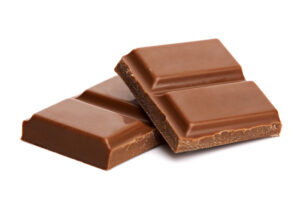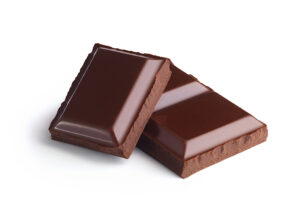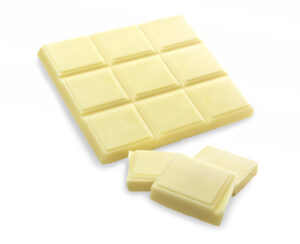
Chocolate wasn’t always the chocolate we enjoy today.
Nut-free chocolate? Chocolate-covered raisins? Go back several centuries and those things would have been unheard of.
In its earliest form, chocolate was a liquid. But don’t think of hot cocoa or the syrup you’d pour over a sundae. This was a hot, bitter beverage favored by the Aztecs.

When the Spanish conquered what is now Mexico, they discovered chocolate and brought it to Europe, where it became a popular delicacy.
Over the centuries, it evolved, to the point we know today: usually solid rather than liquid, and almost always at least a little bit sweet.
The Aztecs likely wouldn’t recognize chocolate as we know it today, in its dark, milk and white incarnations (to say nothing of things like nut-free chocolate).
Our ancestors would wonder what the difference is between the three types of chocolate. You might be wondering too, which is why we’ve put together this short explainer.
Milk Chocolate

As you might have guessed, milk chocolate gets its name from the fact that it contains milk (12 percent milk solids, four percent milk fats), as well as vanilla, chocolate liquor, cocoa butter and a substance called lecithin, which is a stabilizing ingredient.
Milk chocolate has considerably less cocoa than its darker cousin – just roughly five percent to seven percent – giving it a creamier texture, lighter appearance and of course, a much sweeter taste.
Dark Chocolate

As we noted above, a key ingredient in dark chocolate is cocoa. In fact, cocoa is found in both milk and dark chocolate, but dark chocolate can contain anywhere from 45 percent to 80 percent cocoa. This is what gives the chocolate its dark appearance.
Unlike milk chocolate, dark chocolate has a deeper, almost bitter flavor. You might have heard it referred to as “semi-sweet” chocolate.
And when people talk about the health benefits of eating chocolate, they usually mean dark chocolate. Not only is it a potent antioxidant, studies have found that it can improve heart health and circulation and lessen the risk of strokes.
White Chocolate

White chocolate is something of the black sheep of the chocolate family. Although it is made from many of the same ingredients you’d find in milk chocolate – sugar, lecithin, cocoa butter and milk – it’s lacking in the cocoa powder that would make it a true chocolate.
It was apparently created by the Nestle company in the 1930s when the chocolatier was looking for a way of getting rid of excess cocoa butter. Their Alpine White bar has the distinction of being America’s first mass-marketed white chocolate bar.
No matter what type of chocolate you love, Skip’s Candies has something to satisfy that craving, whether you’re a fan of milk, dark or white chocolate.
And because we’re concerned about nut allergies, we sell nut-free chocolate and operate a dedicated nut-free facility.
Contact us today to learn more about our nut-free chocolate or browse our catalog to search through a wide selection of chocolates and other candies. We’re confident you’ll find something you’ll enjoy.

